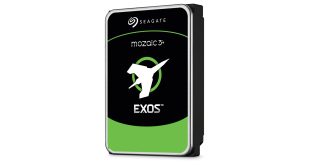We all want fast/responsive systems, with plenty of storage and back-ups of our most important data – like photos, videos and emails. While SSDs provide fast boot times, many of us will still be using hard drives for years to come. KitGuru investigates the market and makes some recommendations.
Terminology
GB means Gigabyte and TB means Terabyte. For our purposes, 1TB = 1,000GB. To fill a 1TB drive with HD photos would mean taking 1 shot a minute, every minute, 24 hours a day, for 6 months. Drives connect using Serial ATA. SATA2 is the most popular (transfers ~150MB/sec). SATA3 drives are twice as fast and will ship in 2010 – but at a higher price. RPM tells you how fast a drive spins. 5,400rpm is slow and 7,200rpm is average and 10,000rpm is fast. Drives also have a small amount of fast memory (cache) to speed transfers. 8MB is small, 16MB is average and 32MB is good.
Pricing
At the time of writing, the trade price for a 250GB drive is under £30 with 500GB drives <£10 higher. In comparison, 2TB drives are under £100. Street price will normally be around 10% higher – plus VAT. That gives us a spread of £30 to £130 inc vat.
Choosing
Buy the biggest drive you can afford. Once you have the size, if you can afford a model with more cache or a faster spin speed – then that’s an advantage. But SIZE matters more. Remember that you MUST back up your data and bigger drives take longer.
RAID
You can put more than one drive in a system. This can increase data security (writing all data to BOTH drives, RAID 1) or improve performance (writing to whichever drive is ready, RAID 0).
KitGuru says… We love the 1TB Samsung SpinPoint F3 drive. It runs at 7,200rpm with a 32MB cache. Unless you’re prepared to spend SSD money, this is about as good as it gets.
Where to buy links…
Dabs
Overclockers
YOYOTech
 KitGuru KitGuru.net – Tech News | Hardware News | Hardware Reviews | IOS | Mobile | Gaming | Graphics Cards
KitGuru KitGuru.net – Tech News | Hardware News | Hardware Reviews | IOS | Mobile | Gaming | Graphics Cards


